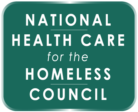by Barbara DiPietro, Senior Policy Director
There are two words that feel especially uncomfortable right now: Sanctioned Encampments.
This term means different things to different people, and can reference a wide range of approaches—but simply letting large numbers of people live outside is hardly a solution to homelessness—and one that has a high risk of devolving into actual health and safety hazards (both for the people who live there as well as the surrounding community). And if there’s no commitment to moving people into permanent housing, these spaces can continue to grow. These are genuine concerns—and as advocates and service providers, navigating the tension between advancing permanent housing and reducing the actual harms happening to unsheltered people right now feels both urgent and uncomfortable.
Is there a way we can stabilize unsheltered people in the short-term, respect their right to dignity, deliver needed care AND continue to move them into permanent housing?
Our new issue brief speaks to just this combination of goals for sanctioned encampments—though we’re calling them Temporary Supported Communities, or TSCs. This term emphasizes the temporary nature of these spaces, the support needed to stabilize and move people to permanent housing, and the community that forms among those living together.
With many shelters at capacity (or simply unwelcoming) and affordable housing remaining elusive—it’s no wonder more people are now living outside in public parks, sidewalks, highway median strips, and any other space they can find to survive. As communities respond with ever-increasing measures to harass, arrest, and fine people simply for being present in public spaces, the pressure is rising to DO SOMETHING to fight back against this urgent, profound injustice.
Many advocates have been working tirelessly for decades to increase the supply of affordable/supportive housing and to end the police-based encampment sweeps that cause so much harm to vulnerable people. But here’s the dilemma communities are facing: Absent permanent housing, if you don’t sweep an encampment, what SHOULD you do? Communities are increasingly experimenting with allowing unsheltered people to legally stay in public spaces—hence the term “sanctioned” encampment.

But here we are—and as more people are living in sanctioned encampments, the Health Care for the Homeless community is delivering more services in these spaces and learning what works well to support and stabilize a myriad of health care conditions. This work cannot occur in a vacuum, and it’s important that these spaces do not become permanent fixtures in our communities.
We interviewed health care providers and TSC residents in 13 communities and asked them what works well—and what doesn’t—in order to present a range of strategies communities can consider implementing to respond to immediate needs while continuing to people into affordable/supportive housing.

The issue brief is organized around three goals, each focusing on vital practices:
- Increasing Safety, Security, and Greater Stability: Sleeping spaces, other basic needs, location, disability access, governance and rules, staff training, perimeter, and referral/entry/exit
- Expanding Connections to Care: Case management and benefit enrollment, health care services, outreach and support services, and harm reduction interventions
- Establishing Stronger Pathways to Permanent Housing: Housing case management and additional housing strategies
This has to be a two-track solution. We must focus on reducing the harms of living unsheltered AND moving people into housing. It is deeply troubling that this is where we are right now because it feels like such an epic failure of our housing policies that we are forced into devising approaches to better support people living outside, rather than in housing. It is also a legitimate criticism that that every minute and dollar spent planning, implementing and running a TSC is a minute and dollar NOT spent on permanent housing units.
We have to talk about how to meet this urgent, uncomfortable new reality and reduce the harms currently being done to unsheltered people. Our new brief on Temporary Supported Communities attempts to give the HCH Community and other stakeholders options for supporting this conversation and advancing a two-track solution.
